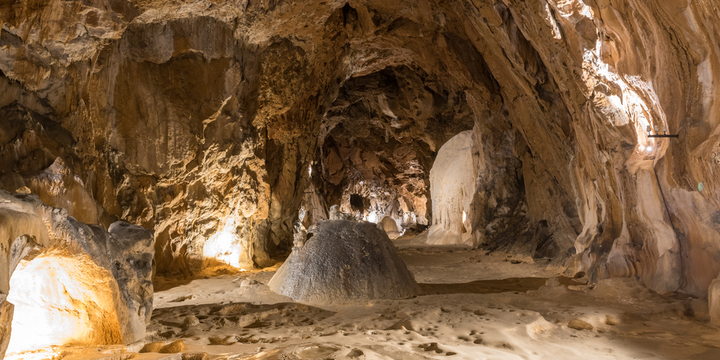The 15 members of the Deep Time misson, voluntarily confined in a cave in the Pyrenees for 40 days, found daylight on April 24. They were marked by the desynchronization of sleep, but also by “wonder” in front of this “extraordinary” environment.
Dazzled by the sun, sunglasses on, the members of the Deep Time expedition reconnected with the outside world, their faces a little pale but visibly in good shape.
To see also:
No time mark
Without a watch, phone or natural light, the 15 volunteers, led by Franco-Swiss explorer Christian Clot, had to get used to the 10.5 degrees and 100% humidity in the Lombrives cave, in Ariège. . To survive, they generated their own electricity by a pedal boat system and drew water 45 meters deep.
“The humidity is very impacting. We have seen over time and fatigue, the need for food to increase,” said Mr. Clot, who spoke at length to the press.
The other participants have not seen the past forty days. “It was a real shock. I thought there was still five or six days left,” said Emilie Kim-Foo, a 29-year-old nurse who was part of the group.
Sleep without landmarks
During the experiment, the participants also noticed a great disparity in sleep cycles. So when some people got up, others went to bed.
“We didn’t have any time markers,” said Tiphaine Vuarier, a 32-year-old psychomotor therapist. “We probably slept more some nights and less others,” said Marie-Caroline Lagache, a 50-year-old jeweler.
Usually, “I don’t remember my dreams. I had a good surprise. I remember a few dreams in the cave,” said Arnaud Burel, a 29-year-old biologist.
Back to reality
Affirming that he had just learned that there was “a new confinement in France”, Mr. Clot, founder of the Human Adaptation Institute, also spoke of “plunging back into reality”, noting that the absence of mask in the cave had been “an interesting form of freedom”.
Still according to the Franco-Swiss explorer, Deep Time aims to study our ability to adapt to the loss of spatio-temporal landmarks, a question raised in particular with the health crisis.
An experience that is not unanimous
Although researchers are associated with it, the approach is greeted with skepticism by other scientists who point out the absence of a sufficiently “rigorous” framework. Etienne Koechlin, director of the cognitive neuroscience laboratory at the Ecole normale supérieure (ENS), which participates in “Deep Time” research, defends its “innovative” character.
Thus, data on the brain and on the cognitive capacities of the participants collected before entering the cave will be compared with those collected on leaving, in particular to study the changes in the nervous system linked to this exceptional environment.
Like other researchers, Pierre-Marie Lledo, director of the Genes, Synapses and Cognition laboratory (CNRS) and of the “Perception and Memory” unit at the Institut Pasteur, underlines the absence of a “group. control “making it possible to compare the results of people locked up with those of others left outside, which prevents scientific validation of the results according to him.
In total, Deep Time will have required 1.2 million euros in funding, in which private and public partners participated.
“The exit from the cave is very complicated to live, it is necessary to resynchronize with (our) world, and to leave oneself” after 40 days spent together, concluded the leader of the Christian Clot expedition.
 Cherry tomatoes contaminated with salmonella: 92 sick and 1 dead
Cherry tomatoes contaminated with salmonella: 92 sick and 1 dead  A better coaching method can make a person grow
A better coaching method can make a person grow  What is the method to prevent diabetes in children?
What is the method to prevent diabetes in children?  What are the effective factors in causing stomach ulcers?
What are the effective factors in causing stomach ulcers?  Why do embarrassing memories seem to appear at night?
Why do embarrassing memories seem to appear at night?  The amazing link between SARS-CoV-2 infection and newly started diabetes
The amazing link between SARS-CoV-2 infection and newly started diabetes  WHO says monkey pox is not a global emergency right now
WHO says monkey pox is not a global emergency right now  Single cell RNA sequencing uncovers new mechanisms of heart disease
Single cell RNA sequencing uncovers new mechanisms of heart disease  Hepatitis of unknown origin: 3 new deaths and 228 cases worldwide
Hepatitis of unknown origin: 3 new deaths and 228 cases worldwide 